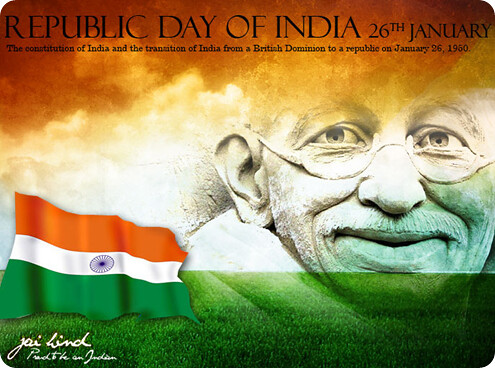Essay on Republic Day of India: January 26th is our Republic Day, we celebrate this day every year. It was in this day in 1950 that our country became the Sovereign Democratic Republic. Here is an Essay on Republic Day of India.
Essay on Republic Day of India
Republic Day of India is a historic day for India. On this day
India became a republic on 26th January 1950 with the adoption of the Constitution
Prior to this date, India was an independent state, but not a republic A state
becomes a republic only when its head of state is elected in the case of our
country. President is the head of the state, although a titular head.
There was no head of the state in the country prior to the
adoption of the constitution.
Dr Rajendra Prasad was the first elected President of India.
Hence, India came to be known as a republic with the adoption of the
Constitution of India on 26th January, 1950This day is celebrated as the Republic
Day of India This could well be called the start of a replacement era for
India.
Every individual, who had attained the age of 21 years, was
conferred the right to elect his/her representative for Parliament and for the
legislative assemblies. Every year the Republic Day of India is widely known
with great pomp and show Though the celebrations are held in the least state
headquarters, the show that happens at New Delhi draws the attention of the
whole world
The President in his capacity as the Supreme Commander of the
Armed Forces take the salute at India Gate at New Delhi. The national
tricolour is unfurled by the President and the national anthem is played out.
There is a grand march past lasting for hours Dignitaries from Location 1344
various countries and from within our own country are an extended invitation to
the occasion to witness the Republic Day parade Through this gala parade India
showcases its achievements and military prowess. At the end of it, there is an
air display in which air force displays its skills in the air.
Not just military prowess but also industrial strides and
economic progress made by the country are displayed. Also on display are those
cultural events that record India’s unity despite diversity
The parade starts in the morning with the laying of Wreath by
the Prime Minister at the Amar Jawan Jyoti at India Gate.
This is paying homage to those martyrs who laid down their life
for the nation. Those willing to witness the parade and the procession gather
there well before that in the winter morning The President is the Supreme
Commander is ceremonially received by the Prime Minister and his entire cabinet
together with all three chiefs of army navy and air force.
The President is ceremoniously conducted to the saluting base.
He arrives there in a coach driven by five horses. He is usually accompanied by
a foreign dignitary invited to the occasion as chief guest.
A big procession follows. Leading the procession is a column of
the heroes of the past. Thereafter, the soldiers from army navy and air force
march past to martial tunes. Platoons from every region participate within the
march past. These are followed by pageants of various states displaying their
specialities.
After that, Delhi school children put up their show of
well-rehearsed drills. Folk dances and cultural troupes take their turn and
display their skill. Delhi police also show their prowess.
These are broadcast by AIR and Doordarshan. It’s a spectacle
worth watching and most of the news channels telecast the programme live for
the benefit of viewers distantly placed.
The procession passes through different parts of the city before
terminating at the Red Fort. Rashtrapati Bhawan and India Gate are illuminated
at night and this presents a delightful sight to the viewers The entire process
of the Republic Day parade culminates two days later with the Beating Retreat.
What happens in New Delhi is the central event. Republic Day
parade and processions are also held at the provincial capitals with the
Governor taking the salute. Flag hoisting is done with great fanfare.
This is the most important national festival of India and it is
celebrated everywhere in every institution, in every office and almost in every
establishment. District magistrates hoist the national flag at their district
headquarters. This ensures participation at all levels.
We have to recollect our great leaders like Gandhi, Bhagath
Singh, Lajpat Rai who have fought for us against the Britishers. It doesn't
suggest that only on Republic day we've to recollect their sacrifices towards
the state but daily we've to recollect and salute them. Because of them, our
country became democratic and no-one is ruling our country. We have to remember
others too whose names I have not mentioned but who have fought for the country
before, during and after India's Independence.




No comments:
Post a Comment